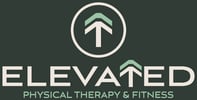Why Squatting Below Parallel is Essential for Strength and Mobility
The squat is one of the most effective exercises for building strength, but the debate over how deep you should go—whether just to parallel or below—often sparks discussion. While squatting to parallel has its benefits, squatting below parallel, where the crease of your hips dips beneath the level of your knees, offers numerous advantages that go beyond just building strength. Here’s why squatting below parallel should be a part of your routine.
"Based on currently available evidence, a FULL DEPTH SQUAT with a natural foot position, approximately shoulder width apart, with unrestricted anterior movement of the knees, an upright trunk, with a forward and upward gaze is recommended."
- Maximized Muscle Activation
Squatting below parallel recruits more muscles than a parallel or half squat. When you descend deeper, your glutes, hamstrings, and adductors (inner thigh muscles) are more fully engaged. In a shallow squat, much of the load is placed primarily on the quadriceps, but when you drop below parallel, the posterior chain (glutes and hamstrings), as well as the adductors (which produce up to 50% of the hip extension needed to ascend from a deep squat) become more involved. This balanced engagement helps to build a well-rounded and stronger lower body, avoiding muscle imbalances that can lead to injury or limit performance in other lifts and athletic activities.
- Improved Flexibility and Mobility
One of the most overlooked benefits of squatting below parallel is its impact on joint flexibility and mobility. Performing deep squats forces your body to move through a full range of motion, which over time, improves mobility in your hips, knees, and ankles. This increased mobility not only benefits your squats but also translates to improved performance in other movements such as running, jumping, and even daily tasks like bending down or standing up. Consistent practice of full-depth squats can help you maintain mobility as you age, reducing the risk of joint stiffness and injury.
- Increased Strength Development
By squatting below parallel, you engage a larger number of muscle fibers, particularly in the posterior chain. This means you’re activating more of your gluteus maximus, hamstrings, and hip flexors compared to partial squats. Engaging these muscles not only helps with hypertrophy (muscle growth) but also contributes to more significant strength gains. Deeper squats challenge your muscles to work harder to push the weight back up, which results in greater overall strength development.
Additionally, deep squats improve your explosive power—useful for activities such as sprinting or jumping—because they train your muscles to work from a stretched and compressed position.
- Enhanced Joint Health and Stability
When squatting below parallel, your body is forced to stabilize itself through a greater range of motion. This can help strengthen the ligaments, tendons, and connective tissues around the knees and hips. Contrary to the myth that deep squats are bad for your knees, research shows that squatting below parallel can improve knee stability when performed correctly, and that retropatellar compression forces are actually highest when we stop at 90 degrees of knee flexion compared with increased ranges due to enhanced load distribution. Deep squats put the knee joint through its full range of motion, helping to build strength in the surrounding muscles and reducing the likelihood of knee injuries over time.
- Increased Core Engagement
Squatting below parallel also requires more core stability. The deeper you go, the harder your core muscles must work to keep your torso upright and balanced. This increased core engagement not only helps with the squat itself but also carries over to other lifts and movements, helping you maintain better posture and reducing the risk of lower back injuries.
- Better Functional Strength
In everyday life, many of the movements we perform—such as picking up something from the ground, sitting down, or standing up from a chair—require us to squat deeper than parallel. By regularly squatting below parallel, you train your body in a way that better mimics real-life movements, thus enhancing your functional strength. This can make daily tasks easier and safer, especially as you age.
- Mental Discipline and Control
Performing squats below parallel requires a greater degree of mental focus and control. The deeper range of motion demands more body awareness, especially when managing heavier weights. Learning to control your descent and maintain proper form throughout the squat helps develop a strong mind-body connection, which is crucial for preventing injuries and progressing in your training.
How to Safely Squat Below Parallel
To gain the benefits of squatting below parallel, it’s essential to maintain proper form. Here are a few tips:
- Warm Up Properly: Before squatting deep, ensure your joints and muscles are properly warmed up. Dynamic stretching and mobility drills targeting your hips, knees, and ankles can help prepare your body for the deeper range of motion.
- Keep Your Heels Down: Make sure your heels remain flat on the ground throughout the squat. This helps maintain balance and prevents excess pressure on the knees.
- Maintain a Neutral Spine: Keeping your back straight and chest up prevents rounding of the lower back, which may or may not lead to injury.
- Start With Bodyweight or Lighter Weights: If you’re not used to squatting below parallel, start with bodyweight squats or lighter weights to build confidence and mobility.
- Use Progressive Overload: Once you’ve mastered the form and range of motion, gradually increase the weight. Ensure that you’re still able to hit full depth without compromising form.
Final Thoughts
Squatting below parallel may take some practice and require additional mobility work, but the benefits are undeniable. If you are interested in working on your squat technique, or are experiencing difficulty getting into a full-depth squat, we at Elevated are here for you with personalized, one-on-one training from our licensed therapists and strength and conditioning coach.



Comments